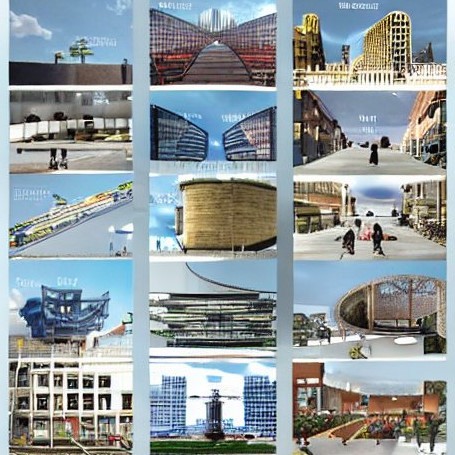by Zach Gentry – Concert CEO
We are in the opening act of a new asset class built, maintained, and operated entirely within a computer. Unlike the title to your house or a bank account record which denote a property right, these assets store the wealth themselves.
The catalytic technology is blockchain, and their first representation of digital assets was Nonfungible Tokens (NFTs.) An NFT is explicitly a ledger entry in Ethereum that identifies its owner and a link. What makes it unique is that the NFT can be priced and the ownership can change. The link can point to a single file or a vast repository of data. Marketplaces like OpeaSea and Rarible allow customers buy and sell their digital assets publicly.
A few architectural NFTs have made headlines. The first was artist Krista Kim’s Mars House, which was originally auctioned for $500K but can now be purchased for $967K on SuperRare. Mars House was not intended to be built but to stand as a digital artifact in the metaverse. In another case, a Japanese digital agency created and is selling a 3D point cloud of the iconic Nakagin Capsule Tower.
Concert is supportive of NFTs and what it can do for a large class of content creators. We imagine that the architects and designers of the future will be able to point to online portfolios of work and will perhaps have opportunities to sell and share these artefacts with people who might use them in video games, movies, or visualization. However, there are a few notes of caution with respect to the NFT for design work.
The first is that while the record of a transaction is immutable, the digital art itself is not. By itself, this might not be an issue. Afterall, if you purchased a digital asset, you might wish to take it offline, to modify it or to destroy it. Those are rights of ownership. The other unavoidable fact known to anybody who has spent any time on the internet is that the link can point to a server that itself has been altered or taken offline. There is no guarantee that it points to a valid file.
When Concert was first formed, we saw substantial value in creating digital assets out of the work of architects, engineers and contractors. We wanted to create a way for professionals to authorize and sign their work, for them to share but maintain the provenance of that work and to check files for authenticity and versioning. We wanted to be able to transfer ownership from architects to owners and project handover. We knew that value was possible with blockchain alone but not with a standard NFT. So we innovated.
First, we created a validator text to ensure that the information at the end of the link was unalterable. That way, there could be no question about the authority of files in use. Don’t trust us? Drop a file in Concert, change anything and check it with our online file checker. The evidence of authorization, purpose and file integrity is unbreakable.
Second, digital assets in traditional NFTs are intended to point to a final version of files whereas the important characteristic of project digital assets is that they change through time. While the most recent versions are needed by project participants, historical records are needed to meet contractual obligations that may extend for more than 10 years. Concert has therefore made not a single project linking source but rather a project identity with a vast array of file links that are connected by version and purpose. These can be shared, maintained or transferred to meet the needs of the project owner.
What we end up with is a new standard for digital practice. Architects can share digital work with confidence knowing that their IP is identified. Contractors and tradesmen can validate their instructions in the field before starting work. Owners can receive meaningful and complete handover documents at the project conclusion.
In 2022, Concert became the system of record to over 200 projects with firms who are dedicated to proper data management and advancing the use of digital assets in their business. Thank you to all our customers as we strive for better data management for the industry.





